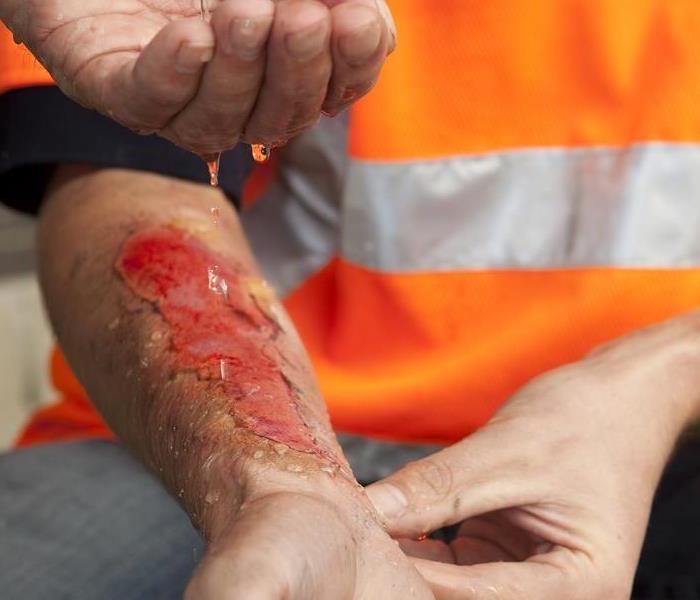Relief for Burns. A Guide to Basic First Aid for Burn Injury.
4/28/2023 (Permalink)
Burns are one of the most common injuries that people can sustain, both at home and at work. They can be caused by a variety of things, including hot liquids, flames, chemicals, and electricity. While some burns are minor and can be treated at home, others require immediate medical attention. In this blog post, we’ll discuss basic first aid for burns that you can use to help relieve pain and promote healing.
Types of Burns
Before we dive into first aid for burns, it’s important to understand the different types of burns. There are three types of burns:
First-degree burns: These are the mildest type of burns and only affect the outer layer of skin. They’re usually red, painful, and can be treated at home.
Second-degree burns: These affect both the outer and underlying layer of skin. They’re usually red, swollen, and painful. Blisters may also form.
Third-degree burns: These are the most severe type of burns and affect all layers of skin. They can be white or black in color, and the skin may appear leathery or charred. Third-degree burns require immediate medical attention.
First Aid for Burns
For first-degree burns, you can usually treat them at home using the following steps:
Cool the burn: Run cool (not cold) water over the burn for at least 10 minutes to help relieve pain and reduce swelling.
Cover the burn: Apply a sterile gauze bandage or a clean cloth to the burn to help keep it clean and reduce the risk of infection.
Take over-the-counter pain medication: If the burn is painful, take an over-the-counter pain medication like ibuprofen or acetaminophen.
Avoid breaking any blisters: If the burn has formed blisters, do not break them. This can increase the risk of infection.
Keep the burn clean: Change the bandage at least once a day and keep the burn clean.
While first-degree burns can usually be treated at home, second-degree and third-degree burns require medical attention. You should seek medical attention if the burn is larger than three inches in diameter, is on your face, hands, feet, or genitals. The burn is deep and white or black in color, or the burn is caused by electricity, chemicals, or radiation.
Burns can be painful and require prompt attention to avoid further damage or infection. By following these basic first aid steps for burns, you can help relieve pain and promote healing. Remember, if you’re unsure about the severity of a burn, it’s always best to seek medical attention.





 24/7 Emergency Service
24/7 Emergency Service
